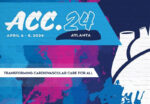Regardless of whether it is attempted through percutaneous coronary intervention (PCI) or myocardial revascularization surgery (MRS), complete revascularization (CR) is not always achieved. Overall, it is more frequent with surgery than with percutaneous treatment. Additionally, incomplete revascularization (IR) has proven to be associated with worse outcomes compared to CR. Researchers conducted an analysis of the...
Peripheral Vascular Disease: Our Reality in Latin America, with the LATAM SOLACI Peripheral Registry
On the one hand, chronic peripheral vascular disease is on the rise. On the other, over the past 20 years, percutaneous coronary intervention (PCI) has gained considerable ground thanks to various new devices, replacing surgery as an alternative in most scenarios. Both strategies have shown similar results, but PCI has fewer complications and shorter hospital stays....
ACC 2024 | REDUCE AMI: Beta-Blockers after Myocardial Infarction and Preserved Ejection Fraction
Most clinical trials have shown benefits of beta blockers after acute myocardial infraction, including patients with extensive AMI, and these were carried out in the era before AMI was diagnosed with biomarkers and prior to treatment with coronary angioplasty, use of antithrombotic agents and high intensity statins, and angiotensin-aldosterone system inhibitors. The aim of this...
ACC 2024 | PREVENT Study
The use of intravascular imaging to identify vulnerable plaque (VP) has proven to be very useful, as such plaque is associated with an increase in major adverse cardiac events. Optimal medical treatment is currently considered the standard strategy to stabilize VP. However, the safety and effectiveness of preventive treatment with percutaneous coronary intervention (PCI) in...
ACC 2024 | ULTIMATE-DAPT Trial
The international guidelines recommend the use of dual antiplatelet therapy (DAPT) with aspirin plus a P2Y12 inhibitor during 12 months in patients receiving percutaneous coronary intervention (PCI) for acute coronary syndrome (ACS), to prevent events such as MI and stent thrombosis. This was a multicenter, placebo controlled, double blind study to determine whether ticagrelor alone,...
Lithotripsy in the “Real World”: REPLICA EPIC-18 Study
Severe persistent calcification of the coronary arteries has been associated with different factors, such as advanced age, hypertension, dyslipidemia, smoking, and kidney failure, among others, and continues to be one of the challenges to stent implantation because of it impact on device advancing, drug release and adequate positioning. Intravascular lithotripsy (IVL) is a technique that...
Virtual Flow Reserve (VFR): Virtual Physiological Test with OCT
Assessing intermediate coronary lesions with intracoronary physiology tests such as fractional flow reserve (FFR) or other non-hyperemic indices is considered the standard of care by both American and European societies. Likewise, intravascular imaging techniques (IVI), be it IVUS or optical coherence tomography (OCT), are of great use in assessing and guiding complex coronary lesions and...
AGENT-IDE: Drug Coated Balloons for Instent Restenosis
Drug eluting stents (DES) have improved considerably over the years, reducing the initial indices of instent restenosis (ISR) by roughly 5-10% a year in USA. However, DES failure might lead to neointimal hyperplasia and neoatherosclerosis, which increases the chance of developing chronic and acute coronary syndromes. Drug coated balloons (DCB), which administer anti-proliferative agents with...
Rehospitalization After Treatment of Left Main Coronary Artery Disease and Its Prognosis: Sub-Analysis of the EXCEL Study
Individual randomized studies have shown variable results regarding the mortality risk following treatment of left main coronary artery disease (LMCAD), either through percutaneous coronary intervention (PCI) or coronary artery bypass grafting (CABG). However, upon assessment of the latest meta-analyses (with matched data), similar risks of all-cause and cardiovascular mortality have been reported for both groups....
Use of IVL in Calcified Coronary Lesions in a Real World Population
The presence of calcification in coronary arteries (CAC) remains a challenge for the percutaneous treatment of these lesions. Several studies have established the link between CAC and poor long term results. Intravascular lithotripsy (IVL) has surged as a tool to induce calcified plaque fracture. Even though studies on this strategy are not randomized, they have...







